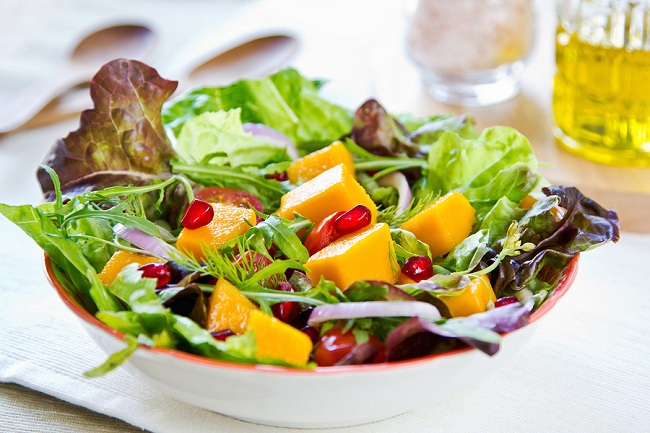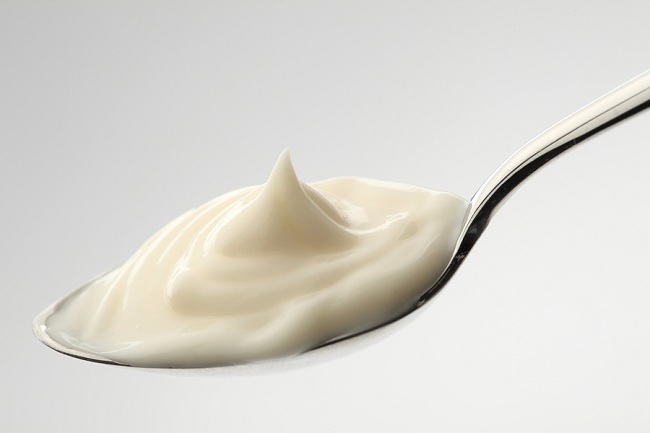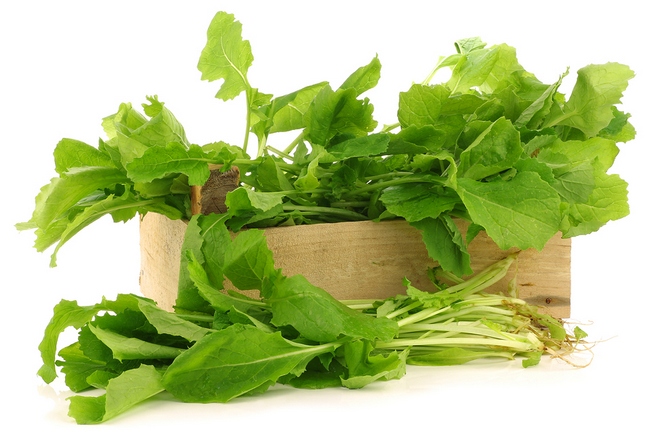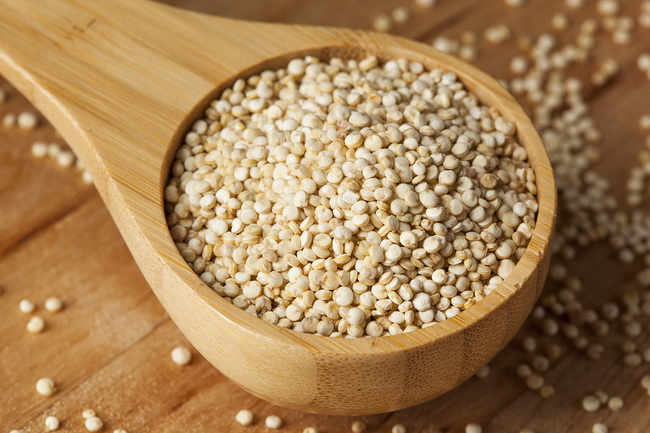- Make It Yourself Lavender Heart-Shaped Bath Bombs!
- 20 Things You Never Knew About “Down There”
- 12 Best Foods For Those Suffering From Arthritis Pain
- 12 Personal Hygiene Mistakes Almost Everyone Makes (Mom Never Told You About #4!)
- 15 Medicinal Plants And Herbs From The Cherokee People
- 12 Mind-Blowing Benefits Of Drinking Coconut Water During Pregnancy
- 12 Outstanding Winter Foods That Won’t Fatten You Up Like A Christmas Turkey
Are You Ruining Your Healthy Salad With These 7 Mistakes?

Photo credit: bigstock.com
Anytime someone decides that they are going to try to drop a few pounds, or they want to start eating healthier, the lunch time salad is something everyone turns to. It’s only logical since they are quick and easy to make and are fairly portable. However, one of the most common complaints among those who quit eating salads is that they are boring or they don’t really satisfy. This is generally due to one of 7 common mistakes people make when building their salads.
Does this sound like you? Do you love salads but find that you are starving just an hour or two after eating one? Do you find most salads incredibly boring? You are probably making one or more of the following mistakes. Keep reading and find out how you can fix those salads so they are delicious, satisfying, and can keep you full for hours.
The top 7 salad mistakes:
1. Poor Choice of Dressing
This is perhaps one of the major causes of salad dissatisfaction. Most people grab one of those bottles of low fat dressing from their supermarket shelf and figure that they are making a healthy choice, when the truth is; these dressing are anything but healthy. Also, they don’t taste anywhere near as good as the full fat version so you are much less likely to look forward to that salad if you know the dressing isn’t really tasty.
First off, most commercially made salad dressing are full of high fructose corn syrup, toxic herbicides (like RoundUp), and GMO oils that contain too many omega-6 fatty acids. That low fat dressing is usually loaded with sugar or fructose so that you won’t miss the flavor that fat provides. Mix up your own salad dressing using a little vinegar (balsamic vinegar works well) and a little oil, such as avocado seed oil, grape seed oil, or olive oil) with some spices of your choice. This type of dressing works well with just about any type of salad. Look online and you will see hundreds of recipes and ideas for salad dressings. One is bound to become your favorite.
Continue to Page 2

Photo credit: bigstock.com
2. Too Little or Too Much Fat
Although the media has tried to portray fat as the bad guy when it comes to your diet, that’s not entirely true. In fact, your body must have fat in order to function. The difference here is in choosing natural, healthy fats, not the highly processed GMO based fats most people eat. There is a huge amount of difference in the fat found in French fries and the fat found in an avocado!
It’s not good to pour on tons of those full fat, commercially made dressings in addition to other items, but if you are using a healthy alternative dressing, such as vinegar and oil, then adding some of these other fats to your salad (in moderation of course) will go a long way towards keeping you feeling satisfied with your salad. Try adding a handful of raw nuts, olives, shredded coconut (fresh, raw coconut, not the sugary stuff sold in most stores), hard boiled eggs, or avocados. All of these are good salad choices.
3. Too Much or Too Little Protein
This is another mistake that most people make with their salads. Like fat, your body must have protein to survive. Without protein, your body cannot make hormones, bones, muscle, and brain cells. However, too many people eat far too much low quality protein, such as hamburgers. You need about half a gram of protein per pound of lean body mass. To find this out, first measure your body fat percentage and subtract number from 100. For example, if you have 30 percent body fat, then you have 70 percent lean mass. Now multiply that by your current weight to get your lean body mass in pounds. Pregnant women or those with aggressive exercise schedules should add about 25 percent more protein to their diets but most people only need between 40 to 60 grams of protein each day.
Once you know how much protein you should eat per day, you can feel comfortable adding some to your salad. Generally, a 3 ounce serving of meat, such as free range, organic chicken or beef will work well. You can also add cheese (protein varies with the type of cheese, so read the label), about a quarter cup of nuts, or about a half a cup of cooked beans. Find out 14 super sources of protein.
Adding the right amount of protein will help keep you full and satisfied so that you aren’t searching for potato chips by 2PM.
Continue to Page 3

Photo credit: bigstock.com
4. Not Enough Variety of Leafy Greens
Most salads are boring as heck since they usually contain only iceberg or romaine lettuce. The larger the variety of greens that you use, the better the nutrition, and the better the chanced that you will stick with your lunchtime salads.
Spice things up and change them around. If you love romaine, that’s fine, but add additional and new tastes to keep the nutritional value high and the boredom factor low. Try baby spinach, mesclun greens, sprouts, baby kale, mustard greens, or even beet greens.
SEE ALSO: Common Mistakes People Make When Trying to Get Healthy
5. Not Enough Spices
This is another boredom factor. If you think salads are flavorless then you need to add some spices and seasonings to liven things up. Try adding some rosemary, thyme, chopped roasted garlic and red onions. You can also use spices such as fresh cracked peppercorns, turmeric, Himalayan salt, or a squeeze of lime juice over the greens. Whatever your favorite flavors are, try adding some to your salads to ramp up the flavor!
Continue to Page 4

Photo credit: bigstock.com
6. Skimping on the Starch
Many people leave starches or grains out of their salads because they feel that they really don’t belong there. The truth is that they do! When you add a touch of starch to your salad, you satisfy your body’s desire for carbs. This means you won’t be thinking about bagels right after you eat your salad. Add just a handful of quinoa, diced cooked sweet potatoes, brown rice, or organic corn to help keep your body satisfied and full of energy.
7. Not Using Organic Produce
Although this won’t necessarily stop you from eating salads, it will do you more harm than good. The major reason most people eat salads is to get lots of healthy, raw vegetables into their bodies. When you choose conventional produce, you are not only not getting all the nutrition you think you are, but you are adding to your body’s toxic load by consuming possibly hundreds of pesticide residues. These residues accumulate in your body over time. Organophosphate pesticides, which are the most common type of pesticides, are well known for the damage they can cause to human health. Glyphosate, more commonly known as RoundUp, is another very commonly known herbicide that may very well be one of the most dangerous factors in the development of chronic disease.
Although organic produce is generally more expensive, it’s well worth the cost when you consider what eating conventional produce is costing you in terms of your health, not to mention the health of your children.
Although technically not a mistake, adding fresh herbs to your salad will go a long way towards improving the nutrition of your salad, as many simple herbs are jam packed with phytonutrients, antioxidants, vitamins, and minerals. Many herbs are super easy to grow in pots or even in a sunny window. If you really want to boost the nutritional value of your salad, try adding one or more of these herbs to your next salad:
- Italian basil
- Dill
- Thyme
- Rosemary
- Oregano
- Sage
- Parsley
- Cilantro
References:





























